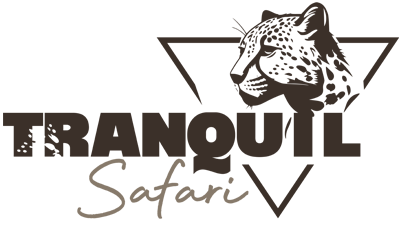In the far northwest corner of Tanzania, where the borders of three nations—Uganda, Rwanda, and Tanzania—converge like threads in a tapestry, lies Ibanda-Kyerwa National Park, a compact yet captivating frontier of untamed beauty. Gazetted in July 2019 from the former Ibanda Game Reserve (established in 1974), this 200-square-kilometer haven in Kagera Region’s Kyerwa District transforms old hunting grounds into a protected paradise for eco-tourists.
Straddling the eastern bank of the mighty Kagera River—which doubles as a natural frontier with Rwanda and links seamlessly to Akagera National Park across the water—Ibanda-Kyerwa feels like a hidden chapter in Tanzania’s safari story. Rolling hills cradle acacia-dotted plains, seasonal rivers carve lush valleys, and scattered lakes mirror the endless sky, all under dramatic sunrises and sunsets that paint the horizon in fire. It’s small-scale intimacy at its best: no crowds, just the whisper of wind through grasses and the distant grunt of hippos. As of 2025, with upgraded border access and growing tour links, it’s emerging as a perfect add-on to Lake Victoria circuits or cross-border adventures.
Vegetation and Scenery
Ibanda-Kyerwa’s landscapes are a love letter to East Africa’s savanna heart—open acacia woodlands stretch across sun-baked plains, their flat-topped canopies casting dappled shade over golden grasslands that sway like ocean waves in the breeze. Deeper in, seasonal rivers swell into oxbow lakes and papyrus-fringed swamps, bursting with emergent reeds and water lilies during rains, while fever trees line the banks in lemon-yellow glory.
Rolling hills rise gently to rocky outcrops, their slopes cloaked in miombo thickets of brachystegia and combretum, dotted with termite mounds like ancient totems. The Kagera River steals the show—a broad, meandering lifeline carving the park’s western edge, its sandy banks and emerald pools evoking a timeless African idyll. This mosaic shifts with the seasons: dry months reveal sculptural acacias against azure skies, while wet spells green the valleys into verdant mosaics alive with wildflowers and butterflies. At 1,288 meters average altitude (ranging roughly 1,200–1,600 meters), the air stays crisp, with vistas sweeping from Ugandan highlands to Rwandan ridges—a photographer’s dream of layered horizons.
Wildlife
Though compact, Ibanda-Kyerwa packs a diverse punch, with animals clustering around perennial waters for reliable sightings. The Kagera’s pools are hippo central—massive pods yawn and wallow, their pinkish hides glistening at dusk, while Nile crocs patrol the shallows like submerged logs. African buffalo roam in moody herds across the plains, zebras stripe the grasslands, and giraffes silhouette against acacia backdrops like living etchings. Antelope stars shine here: elegant roan with their scimitar horns and punk-maned crests ghost the open flats, alongside reedbucks bounding reed-fringed edges, topi in territorial standoffs, elands as nomadic giants, impalas leaping in fluid arcs, and waterbucks quenching at lake rims. Leopards prowl the rocky hills, their rosettes blending into dappled shade—night drives up the odds. Smaller herds of Thomson’s gazelles, oribis, and bushbucks add fleet-footed charm, with baboons chattering from fig groves. Elephants wander seasonally from neighbours, but the park’s intimacy favours close encounters over mass spectacles.
Birdlife
Birders, rejoice—Ibanda-Kyerwa’s wetland-savanna blend hosts more than 200 species, a feathered frenzy fueled by its watery edges and varied heights.
African fish-eagles trumpet from fever trees overhanging the Kagera, their white heads flashing as they dive for tilapia. Grey crowned cranes dance in grassy leks, wattled lapwings pipe alarm calls from mudflats, and lilac-breasted rollers tumble iridescent against the sky. Swamps shelter papyrus gonoleks’ crimson flashes and malachite kingfishers’ turquoise darts, while miombo harbours barbets’ fruity trills and hornbills’ whooping flights. Migrants swell the ranks in wet months, turning dawn into a chorus—prime for hides along river loops.
What to do at Ibanda-Kyerwa
This park rewards the unhurried: dawn game drives rumble through acacia lanes ($50–80/person), yielding buffalo herds silhouetted on hills or leopards draping branches. Night drives crank the drama, spotlights catching bushbabies’ eyeshine or hippo trails. Guided walking safaris (ranger-led, ~2–4 hours, $30+) offer that raw brush with the bush—track reedbuck prints in the dust, sniff the river’s earthy tang, or pause for a bush breakfast amid wildflowers.Birdwatching stakeouts at lake edges net endemics, while cultural walks link to Kagera villages for beekeeping demos or craft tales. Canoe outings on the Kagera (seasonal, $40+) glide past croc grins, and photography setups capture golden-hour magic. As a young park, vibes stay low-key—no mass tourism, just immersive loops with Burigi-Chato or Akagera for cross-border flair.
Getting There
Isolation adds allure, but access is straightforward. Fly scheduled or chartered to Chato International Airport (from Dar es Salaam or Mwanza, 1–2 hours, ~$100–200), then a 2–3 hour 4WD transfer (150–200 km) to Murongo Gate. Kigoma Airport serves as an alternate for western routes. Roads: Bukoba to Murongo (220 km, 4–5 hours on graded tracks), Chato (327 km, 6 hours), or Uganda via Murongo (3.5 km from border)—EAC passports ease the hop. Buses from Bukoba or steamboats from Mwanza add a budget adventure. Dry-season 4WDs rule; tours bundle with Lake Victoria ferries.
Climate and Best Time to Visit
Equatorial warmth with highland moderation defines the weather: days sizzle to 41°C in valleys, nights chill to 13°C on hills—layers are your friend. Two wet seasons bring 800–1,200 mm annual rain: short October–November flushes and long March–May deluges that green the plains but muddy tracks.
Dry June–September? Golden game-viewing, with animals at water and clear skies for stargazing.Prime time: June–September for dust-free drives and concentrated herds; shoulder October or February for fewer crowds and blooming butterflies. Rains suit birders (migrants peak December–March), but fly in if road-tripping.
Where to Stay
Keeping its frontier spirit, lodging leans rustic and riverine: special campsites like those along the Kagera offer shaded pitches with ablutions and fire pits (~$20–30/person/night, self-cater or op-supplied).
Arrange via TANAPA—bring tents or opt for mobile setups from operators ($150–250 full-board). Seasonal hunting camps linger for fly-in vibes, but photographic tourism rules. Nearby Bukoba guesthouses (e.g., $40–80/night) bridge for overnights. By 2025, eco-lodges whisper on the horizon, but the bush’s hush is the real draw.
